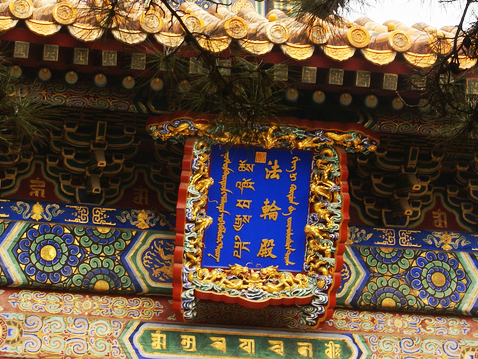The Chinese Language and the Languages of China

There are an incredible number of stereotyped perceptions of China that pervade Western culture, from the myth of the model minority to that of the dragon lady. Breaking these stereotypes is crucial to opening students to a more pluralistic worldview. While some people may find China’s true diversity overwhelming or confusing, it can certainly be a point of fascination and engagement for students. After destroying the myths that Chinese people eat sushi, practice karate, and make Godzilla movies (all misconceptions my students have had over the years!), it’s time for us to take aim at the myth of China’s homogeneity.
Let’s start with language. It goes without saying that Chinese is a unique language, and it has been the stuff of legend for the Western imagination since medieval times. European poets and philosophers for centuries longed for the exotic East of Arabia, Persia, India, and China with their inscrutable ways, incomprehensible tongues, and indecipherable scripts. The seventeenth century philologist and failed decipherer of Egyptian texts Athanasius Kircher saw Chinese as a corrupted form of hieroglyphics and thought the Chinese were a long lost tribe of Israel. The philosopher Gottfried Leibniz was fascinated by Chinese characters and drew inspiration from them in his search for the perfect written language that could transmit thoughts directly without the messy intermediary of phonology. Then there is the ongoing and lively debate on whether Chinese characters function as “ideograms,” “pictograms,” “logograms,” or some other hyphenated “-gram” or “-graph.” Although it shares some properties with both cuneiform and hieroglyphics, the Chinese language is singular among current world scripts.
Advocates of the Chinese script often point to its uniqueness and, at the same time, its unifying function. S. Robert Ramsey, whose book The Languages of China is one of the most engaging introductions to the subject, quotes the pioneering Swedish sinologist Bernhard Karlgren (1929): “The Chinese script is so wonderfully well adapted to the linguistic condition of China that it is indispensable; the day the Chinese discard it they will surrender the very foundation of their culture.” After all, speakers of all Chinese “dialects” can read the same characters and communicate in writing even when they struggle to understand each other’s speech. In this sense, China is an incredibly unique linguistic region, distinct from most others in the world. What are often called the “dialects” of China are in fact a series of related languages, many mutually unintelligible, that are as distinct from each other as any of the languages of Europe. The languages of China are all called varieties of “Chinese” because they are unified by a single written script, a common culture, and a shared political identity, while politically fragmented Europe has a multiplicity of distinct national “languages.” As the old adage says, a language is really just a dialect with an army and a navy. India presents yet another fascinating case--a country that is politically unified but in which different “regional” languages enjoy official status. Latin America and the Middle East are different cases still, in which multiple countries use the same “language” (Spanish or Arabic). Perceptions of “language” or “dialect” differ greatly and clearly have much to do with national, ethnic, and cultural identities.
The varieties of Chinese can be confusing for the visitor or foreign learner. Those of us who have studied Mandarin in Beijing or North China will often find ourselves frustrated by the accents we hear in Fuzhou, Guangzhou, or Taipei. Indeed, the locals will often discover that the foreigners speak more precise “standard Mandarin Chinese” than they do. Mandarin is, of course, a linguistic and cultural construct that was designed as a means of political cohesion and practical communication. Like American English, there is a standard language, but some of its nuances and details can be difficult to pin down.
Chinese people who have been raised with multiple dialects--Mandarin and Cantonese, for example--will often remark how similar they are. For Mandarin speakers who have not grown up with Cantonese, however, there is no appreciable difference in intelligibility between that southern “dialect” of “Chinese” and Turkish or Amharic. Beyond these two “languages” of China, there are also the languages of China’s 55 or so minority groups, most of whose native languages are completely unrelated to Chinese. We can find China’s major languages of the country’s ethnic minorities on currency, for instance, including Zhuang, Mongolian, Tibetan, and Uighur, alongside text in Chinese and pinyin, the official Romanization system.
The increasing connectivity of the world means that we share increasingly more of our interests, habits, and values with people across the globe. At the same time, it encourages growing diversity at the local level. I am a great believer that we should not just teach the Chinese language, but also, to use Ramsey’s phrasing, the languages of China. This includes the contemporary speech of young people in Beijing as much as Cantonese or the Classical language of the ancient texts. We need to teach not just about China, but about a multiplicity of “Chinas” that reflect the diversity of the people, languages, and cultures. And, by extension, we need to teach about the many “Americas,” “Japans,” “Nigerias,” and “Brazils” of the world.
After all, China is much more than just pandas, dumplings, and lion dancing. It is also hip-hop and heavy metal, experimental art and music, Muslims and mosques! Although even many Chinese may be surprised to look at China through some of these lenses, nothing is more exciting to our students than to have their worldviews altered and their eyes opened to a richer world of new experiences.
Author: Chris Livaccari